Your support helps us to tell the story
From reproductive rights to climate change to Big Tech, The Independent is on the ground when the story is developing. Whether it's investigating the financials of Elon Musk's pro-Trump PAC or producing our latest documentary, 'The A Word', which shines a light on the American women fighting for reproductive rights, we know how important it is to parse out the facts from the messaging.
At such a critical moment in US history, we need reporters on the ground. Your donation allows us to keep sending journalists to speak to both sides of the story.
The Independent is trusted by Americans across the entire political spectrum. And unlike many other quality news outlets, we choose not to lock Americans out of our reporting and analysis with paywalls. We believe quality journalism should be available to everyone, paid for by those who can afford it.
Your support makes all the difference.Pasta comes in endless shapes and sizes and is the perfect vehicle for a host of sauces and stuffings – from a simple spaghetti with olive oil, garlic and chilli to a complex, layered ravioli.
In this strip of recipes you’ll find a pasta shapes geared to a particular sauce or filling. Those with tubes, grooves or hollows, such as conchiglie or penne, work best with chunkier sauces, as the sauce gets into the spaces in the pasta.
Long shapes, such as spaghetti or tagliatelle, work best with smoother sauces or flavoured oils that lightly coat the pasta.
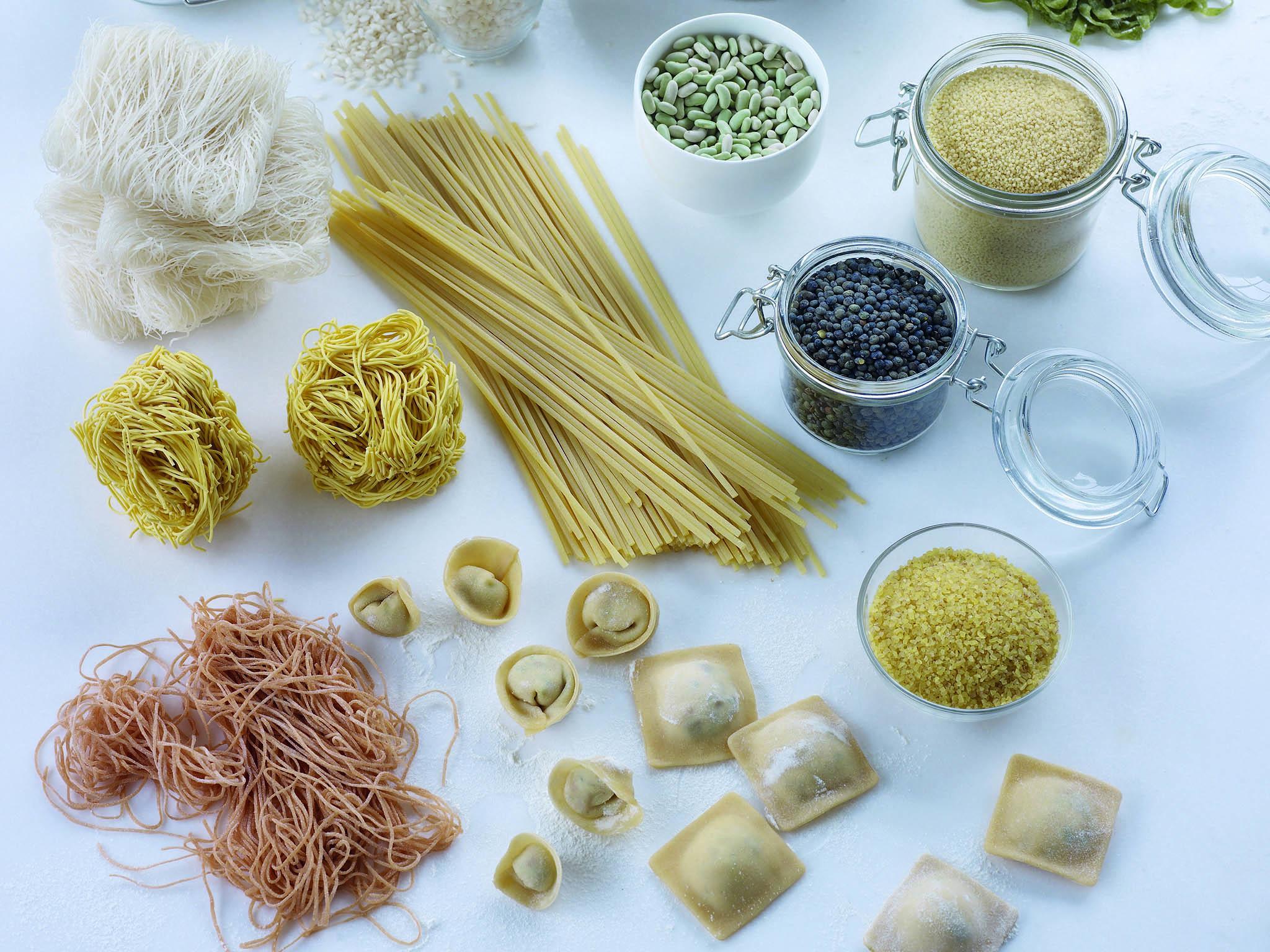
Of course, while bearing these rules in mind you should feel free to vary the pasta shape as it you like.
Dried pasta has a firmer texture than fresh, which suits many dishes. It is also of course more convenient, and the ideal option for a quick pasta supper.
Supermarket-bought fresh pasta is variable in quality, and homemade is certainly superior, both in terms of taste and nutritional value. It is very satisfying, as well as fun, to make your own pasta, and mastering the basic skills will give you the freedom to create your own flavours and fillings.
The recipes in this section can be made with either fresh or dried, unless a specific shape is required, in which case dried will be indicated. As a general rule for substituting dried pasta for fresh, you need to reduce the weight by one third.
We use whole eggs in our pasta for general purpose use. For a richer flavour, silky smooth texture and more vibrant colour, use only egg yolks or a combination of whole eggs and yolks (two yolks for one whole egg). No salt is added to pasta as it absorbs moisture and can give the pasta a speckled appearance. Salt added to the cooking water will be absorbed by the pasta as it cooks.
Fresh pasta
Serves 4
400g double-zero grade pasta flour
4 large eggs
1 tbsp olive oil
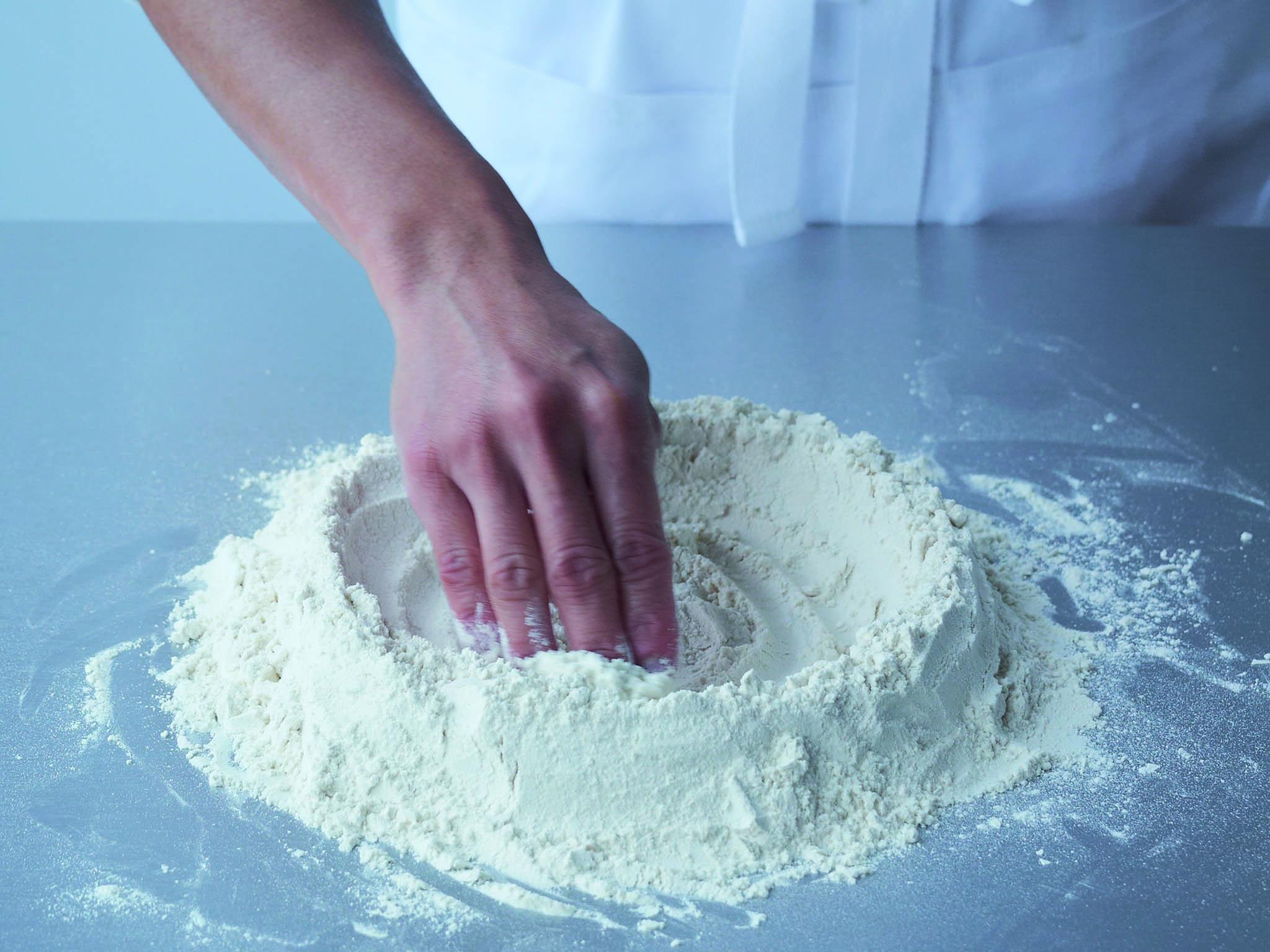
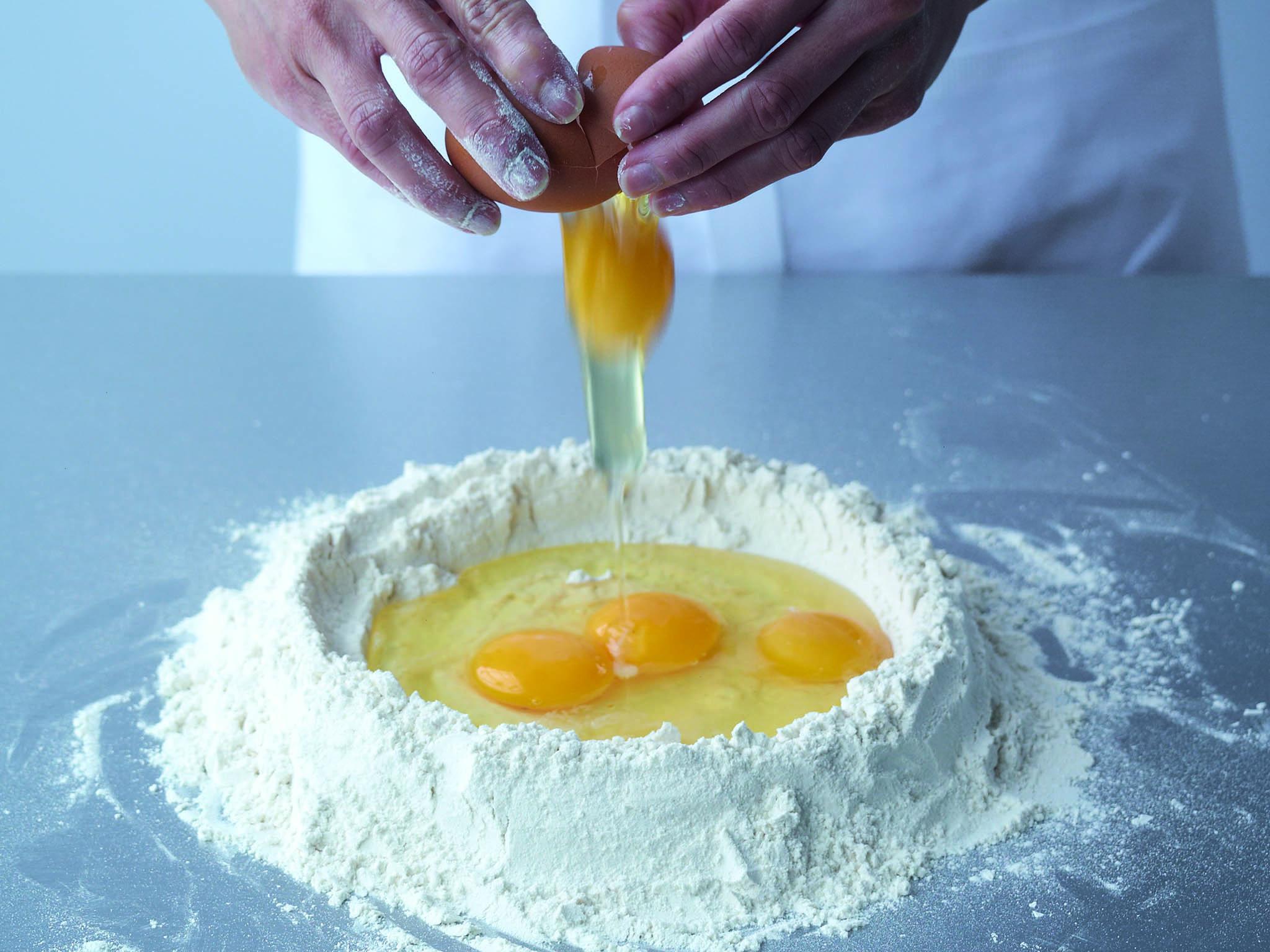
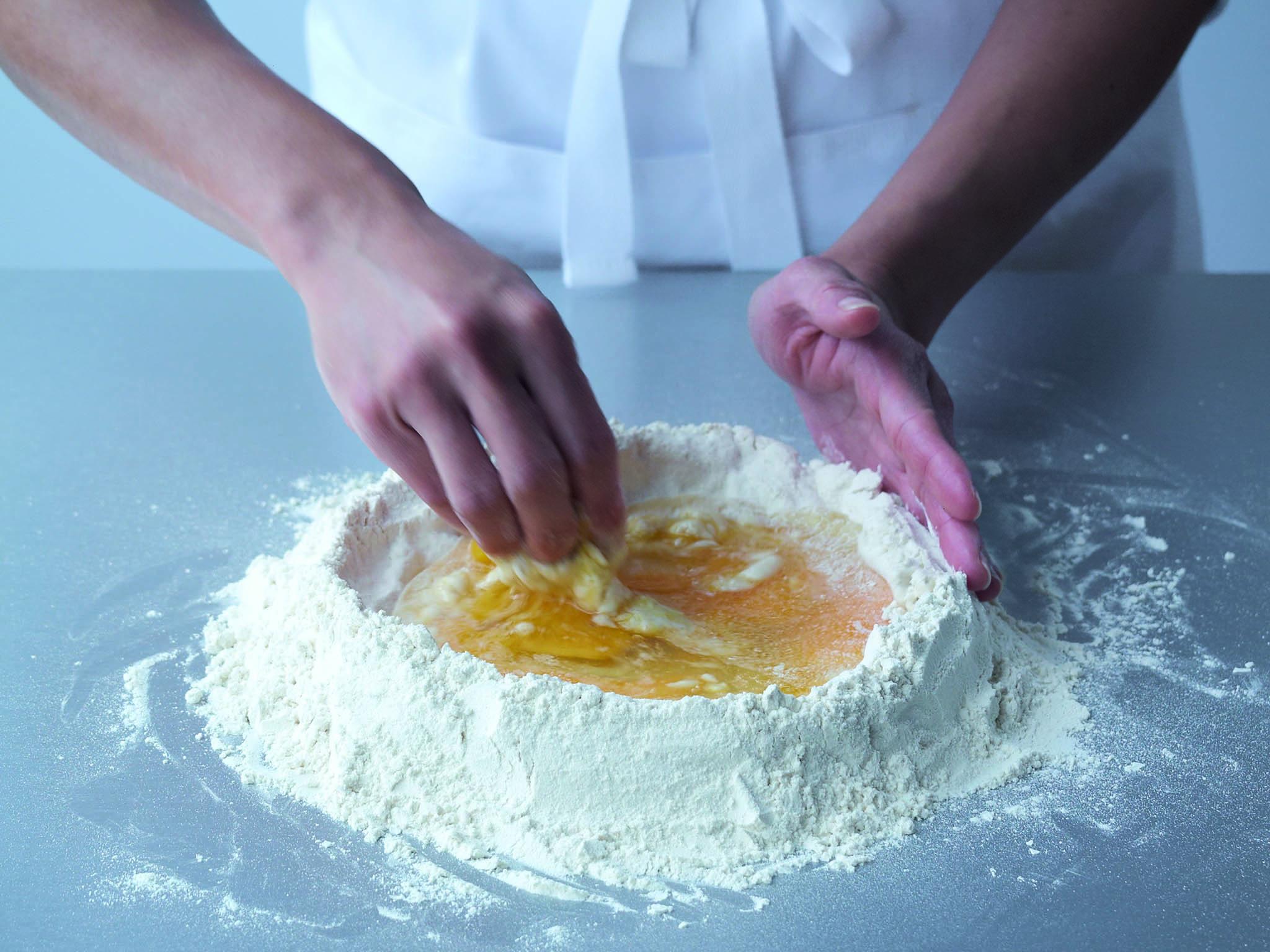
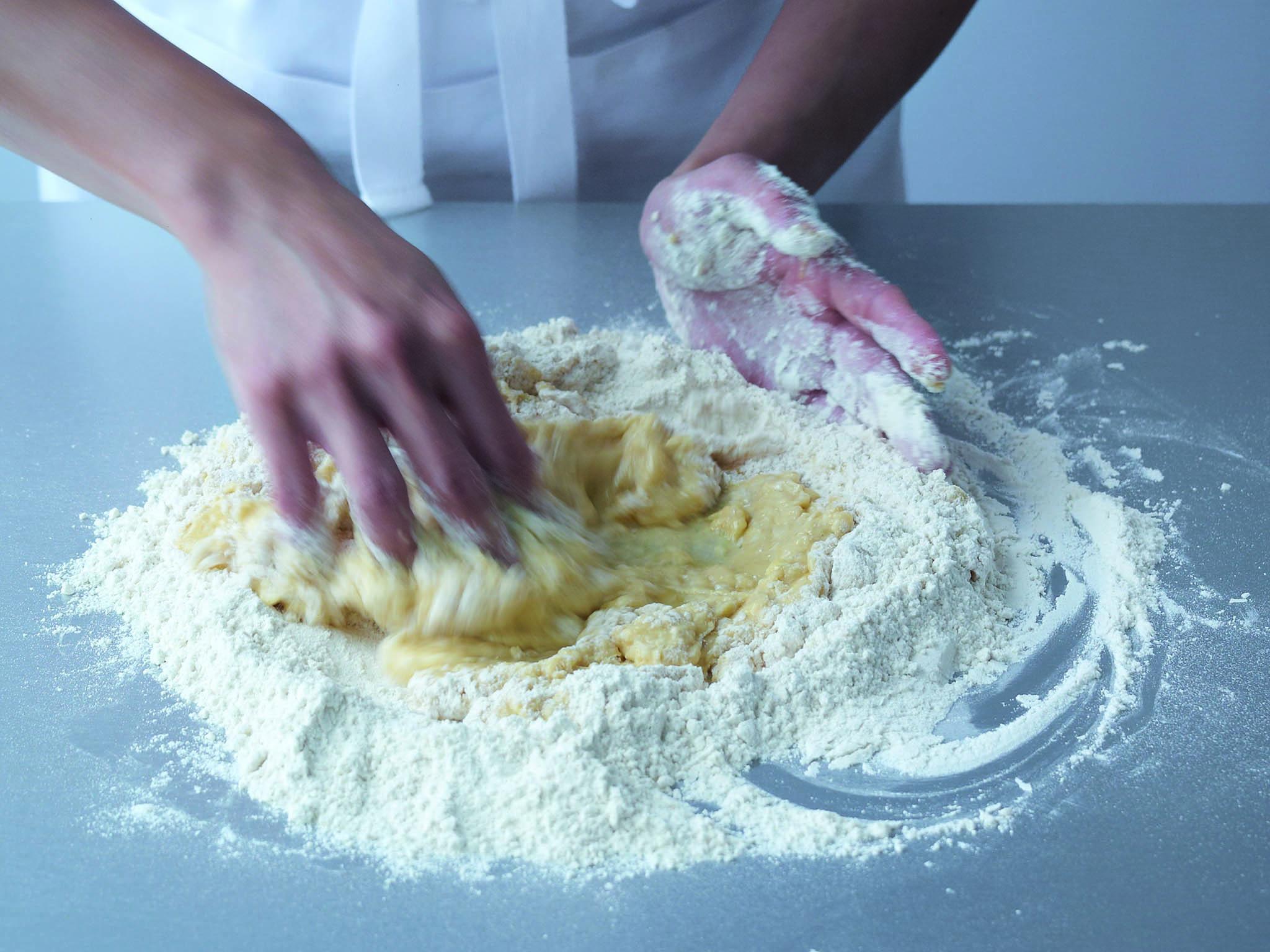
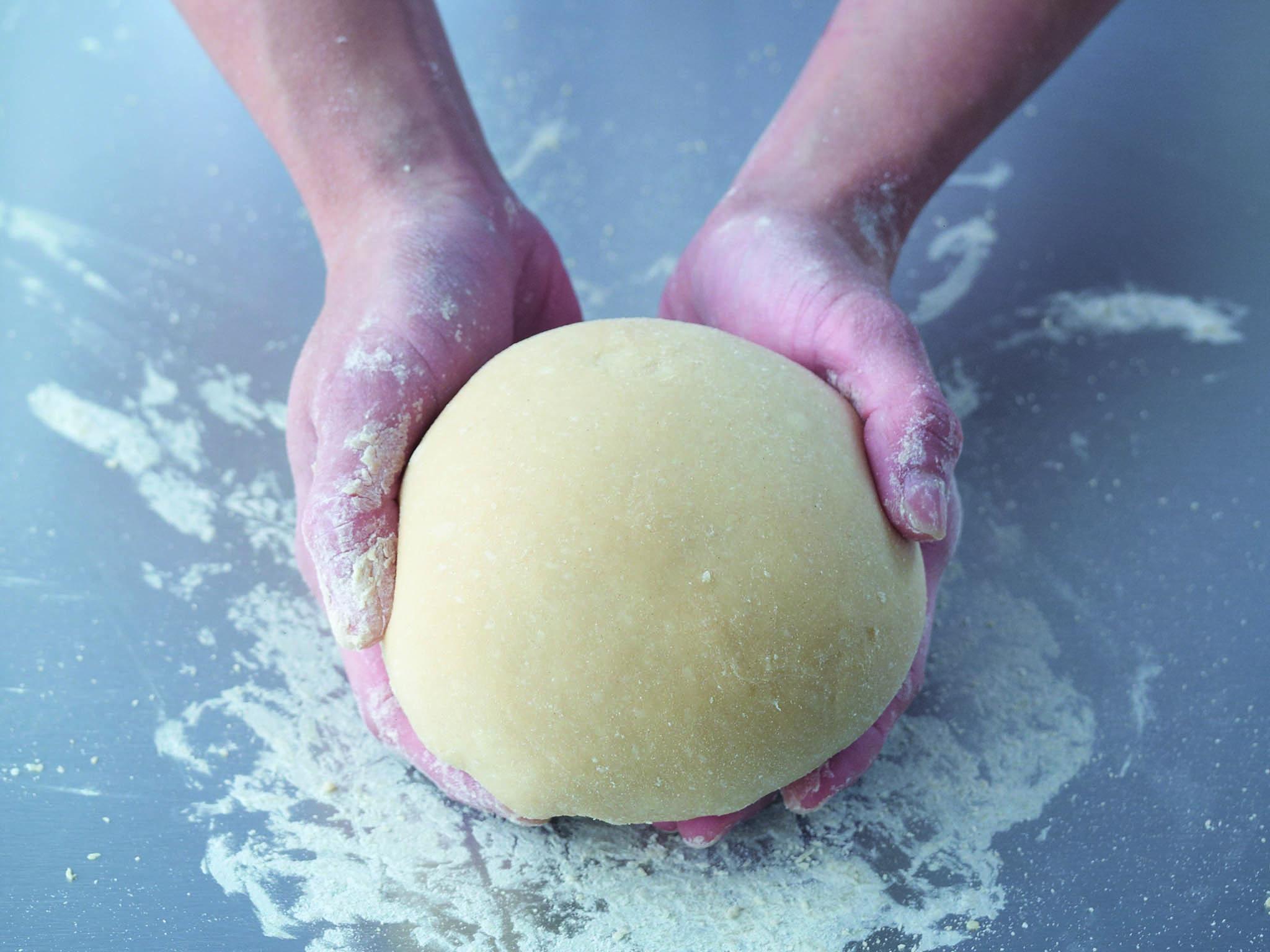
Continue to knead until the dough until smooth and elastic, about 5 minutes. Wrap the dough well in clingfilm and leave it to relax in a cool spot in the kitchen (not the fridge) for at least 45 minutes and up to 2 hours. The longer it rests the easier it will be to roll out. It is possible to make a quick pasta that only rests for 15 minutes, but the texture will not be quite as silky. It can be rested overnight in the fridge, but needs to be removed to cool room temperature 20 minutes before rolling out.
A note about “00” pasta flour…
Double-zero pasta flour is a high-gluten-and-protein flour that is milled to a much finer texture than most flours (the fine milling is indicated by the “00” rating), resulting in a silky, smooth texture.
Making pasta in a food processor: Put the flour, eggs and oil the bowl of the processor and switch the machine on. The ingredients will create a coarse crumb as the flour absorbs the eggs and oil. Switch off, take a little of the crumb between your fingertips and work it into a dough. If the crumb comes together quite easily, is firm and a little tacky, not too dry and stiff and not sticky, then tip it onto a lightly floured surface and knead into a dough.
If the dough is very stiff and dry-looking, then add more egg, about a quarter of an egg at a time, pulsing the mixture and checking the consistency after each addition. If the dough is very soft and sticky, add about 1 tbsp flour at a time until you achieve the correct consistency.
Rolling and cutting pasta dough: Pasta can be rolled by hand, or with a pasta rolling machine for speed and ease. When rolling out the dough, roll only a small piece at a time as it dries out quickly and develops a “skin”. Keep the remaining dough wrapped in clingfilm as you work on each piece. Fresh pasta should be rolled extremely thinly; it increases in volume considerably when it cooks, so if it is not rolled thinly enough it can be unpleasantly thick and tough to eat.
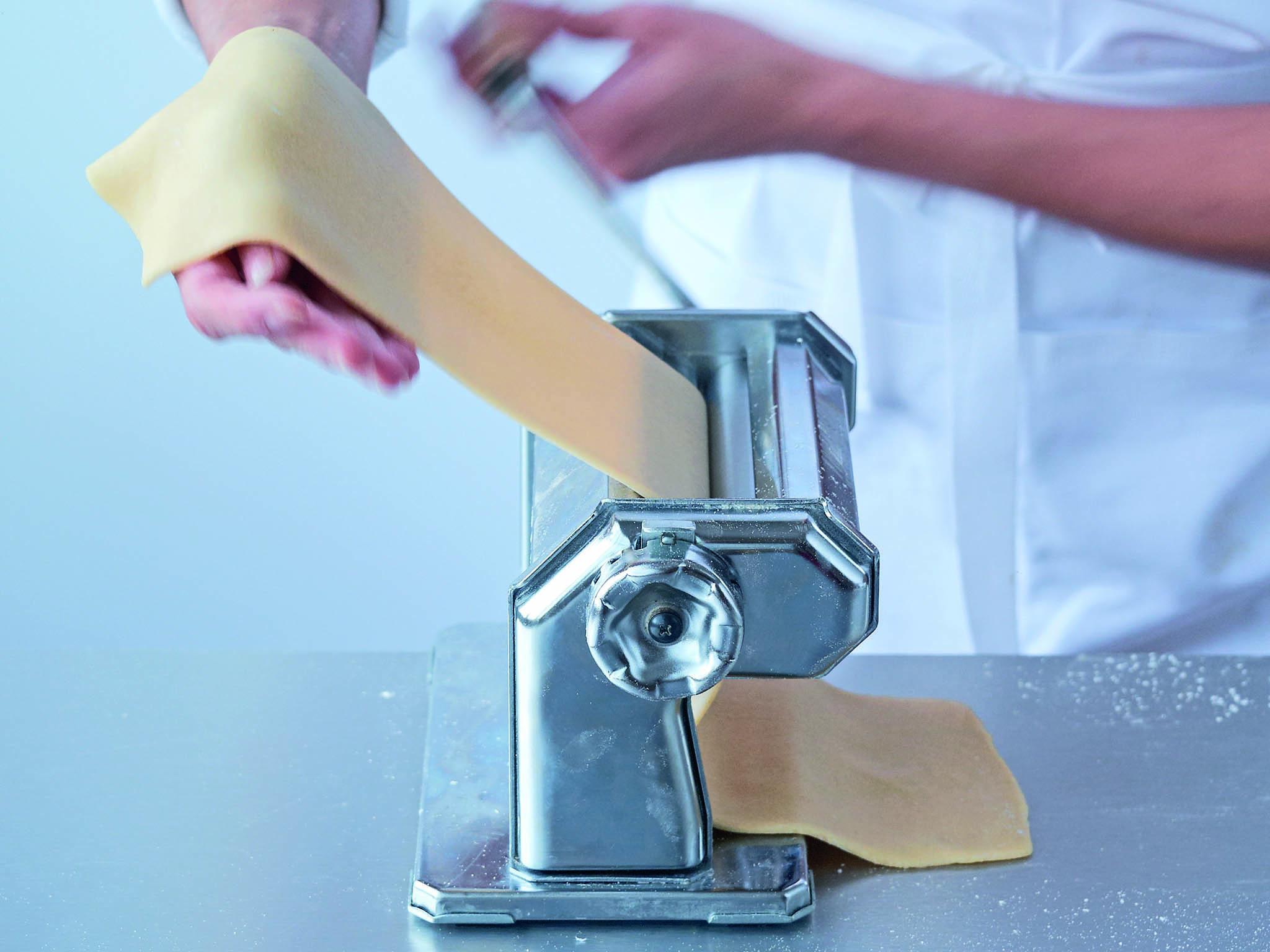
Rolling by machine: Attach your pasta machine securely to a work surface. Roll out the dough a little by hand first to make it easer to roll through the machine without putting too much strain on the rollers. Begin with the widest setting and pass the dough through the rollers three or four times, folding the dough after each pass, and passing the open ends through the rollers first. Try to ensure the pasta is shaped into lengths as wide as the machine.
Move the gauge to a narrower setting and pass the pasta through, narrowest end first, continuing to repeat the process until the second narrowest or narrowest setting is reached. Different pasta machines will give slightly different settings.
Rolling by hand: Using a rolling pin, or a pasta rolling pin which is tapered at both ends, roll out the dough as thinly as possible. Avoid flouring the work surface as the surface can help to anchor the dough to allow you to stretch it out more and more. The longer you have relaxed the dough the easier it will be to roll, as the gluten will have relaxed and the elasticity will be reduced. Try to roll the dough until it is paper thin.

Cutting by machine: Pasta machines normally come with a set of cutters to cut either linguine or tagliatelle. After rolling pasta into long lasagne sheets, insert the cutters and feed the pasta through the cutters to cut to the required width. Unravel each piece of pasta and place over a rack or frame to allow the pasta to dry a little and lose its tackiness, becoming leathery on the outside but staying supple and flexible, about 10 minutes. Leaving the pasta to dry for too long will dry it out completely and it will become brittle and break.
Alternatively, the pasta can be shaped into nests after cutting and placed to dry on a tray lightly dusted with flour or semolina. This is particularly useful if you want to store the pasta for later use.
Cutting by hand: Very lightly flour the pasta to prevent it from sticking together, then fold each end of pasta towards the middle and keep folding until you have a more manageable size of pasta to deal with. Trim the ends, then cut the pasta across the folds into the required width; 2-3mm for linguine, 5-6mm for tagliatelle or fettuccine, 1½-2cm for pappardelle. For a more rustic look, you can tear rather than cut the pasta. Dry the pasta in the same way as for cutting by machine, above.
Cooking pasta: Pasta should go into rapidly boiling water, or it will stick together. There is no need to add oil to the water. Add plenty of salt to the boiling water before you add the pasta. Give the pasta a couple of quick stirs as it cooks, to prevent sticking, and leave to cook, uncovered, at a fairly rapid boil. To test for doneness, taste a piece; it should be al dente, which means tender but still with a little resistance, or bite (literally “to the tooth”). Drain in a colander.
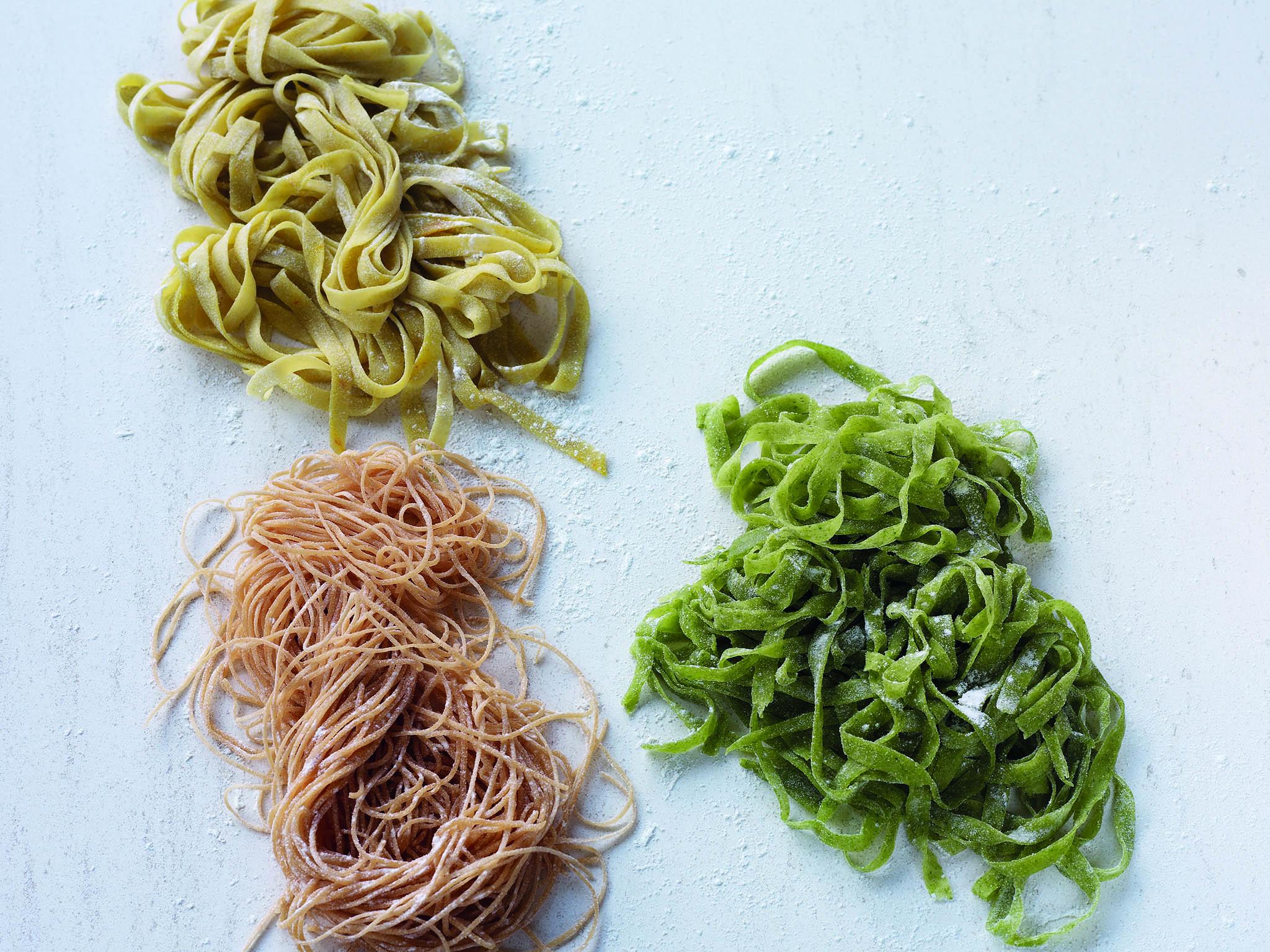
Flavoured pastas
Green or spinach: Reduce the number of eggs in the main recipe to three and with the eggs add 250g spinach, blanched and refreshed, squeezed to remove as much water as possible, puréed and passed through a sieve to give a fairly dry paste. You might need to add a little egg yolk to achieve this.
Tomato: Add about 2 tsp tomato purée with the eggs.
Herb: With the eggs, add chopped fresh herbs to taste, such as parsley, thyme or tarragon.
Beetroot: Add 1 small cooked, peeled and puréed beetroot with the eggs.
Cracked black pepper: mix 1-1½ tbsp coarsely ground black pepper into the flour before adding the eggs and oil. Best cut into tagliatelle (but not rolled to the thinnest setting as the pepper can make it tear). Drain well after cooking, toss in olive oil, drizzle with a little truffle oil and sprinkle with parmesan shavings and basil leaves.
Saffron: Toast ½ tsp saffron strands for 30 seconds in a very hot, dry frying pan, then tip into a small heatproof bowl, cover with 2 tsp boiling water and leave to cool. Add the saffron and soaking water to the eggs and oil when making the pasta. Excellent served as tagliatelle, well drained after cooking and tossed with flakes of hot-smoked salmon, or finely sliced gravadlax, and some crème fraîche and dill sprigs.
‘Leiths How to Cook by Leiths School of Food and Wine’ (Quadrille, £30) Photography © Peter Cassidy

Join our commenting forum
Join thought-provoking conversations, follow other Independent readers and see their replies
Comments